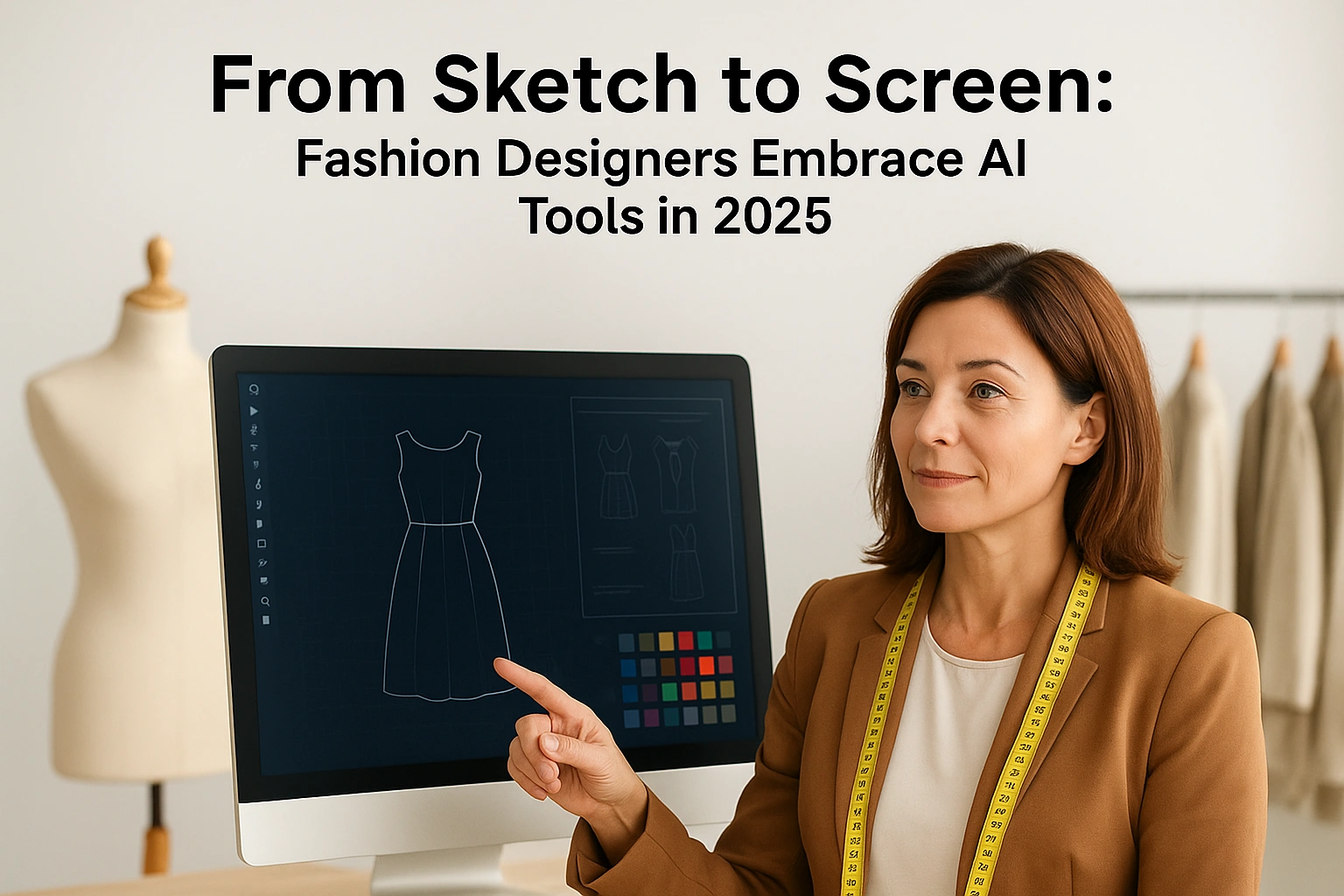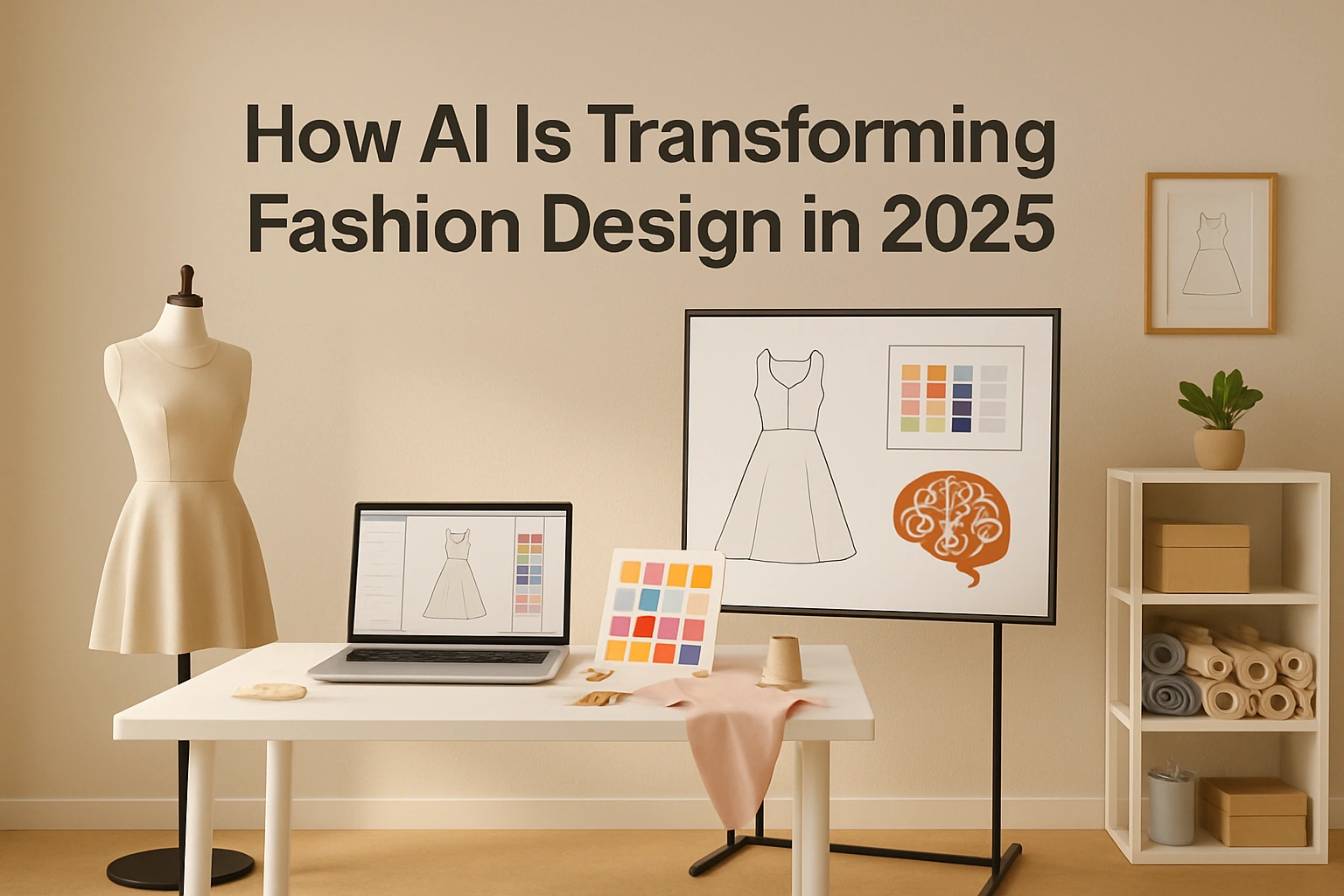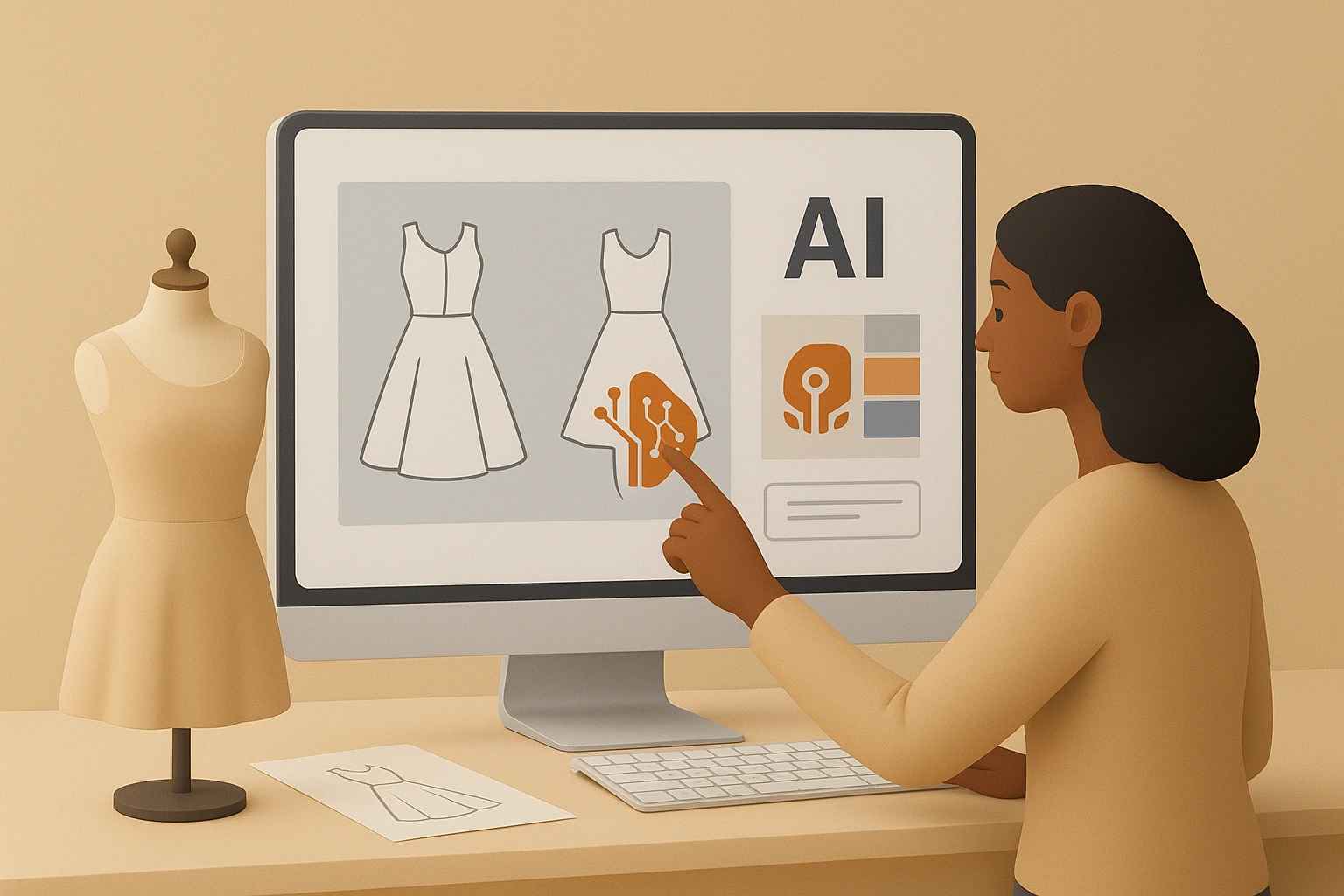
- September 1, 2025
- Top Search
- 12:39 pm

Artificial intelligence (AI) is no longer just for tech experts—it’s becoming a powerful tool for fashion designers. From creating design ideas to helping reduce waste, AI is transforming how collections are imagined, tested, and produced.
For fashion designers, this doesn’t mean that machines are taking over their artistry. Rather, AI is acting as a collaborative partner—a tool that extends their creativity, accelerates decision-making, and provides insights that were once difficult to access. The human touch remains at the heart of every collection, but AI adds speed, precision, and innovation to the mix.
As we move further into 2025, the partnership between AI and fashion designers will only grow stronger. Those who embrace the technology are likely to find themselves at the forefront of a new era in fashion—one that combines art, data, and technology to create designs that are not only beautiful but also sustainable, efficient, and deeply connected to consumer needs.

How Designers Are Using AI Today
Fashion designers are beginning to use AI tools in exciting ways:
Idea generation: With a simple text prompt, AI can create mood boards, fabric patterns, or even full outfit concepts.
Quick experimentation: Instead of sketching dozens of variations by hand, designers can ask AI to generate multiple options instantly.
Color and texture exploration: AI tools can mix unusual palettes and textures, inspiring designers to step outside traditional choices.
Think of AI as a brainstorming assistant—always ready with new ideas, but not the final decision-maker.
Human Creativity Still Leads
One of the biggest misconceptions is that AI will replace designers. In reality, AI works best when combined with human vision.
Designers set the direction—AI simply expands the options.
AI suggestions often spark unexpected inspiration, which designers then refine.
The final garment still reflects human culture, emotion, and storytelling—things a machine cannot replicate.
The future of fashion lies in this partnership, where human creativity stays at the core.
Real Examples in the Industry
Across design fields like architecture and furniture, creators are already embracing AI. The same momentum is reaching fashion.
Some fashion houses experiment with AI-assisted prototypes and virtual garments, while independent designers use generative tools to push boundaries. With 3D printing, AI-inspired designs can move from screen to fabric faster than ever before.
For emerging designers, these tools lower the barrier to entry. What once required big budgets for sampling can now be tested digitally with minimal cost.
AI and Sustainability in Fashion
Fashion has long been criticized for waste—fabric scraps, unsold stock, and overproduction. AI can help tackle these problems.
Virtual sampling reduces the need for multiple physical prototypes.
Smart predictions help brands produce only what customers are likely to buy.
Design optimization ensures better use of fabrics, minimizing leftovers.
By blending technology with craftsmanship, designers can create not only beautiful but also responsible fashion.
Challenges and Concerns
Like any innovation, AI brings challenges designers should keep in mind:
Authenticity: Will customers value an AI-inspired design as much as a hand-sketched one?
Bias: If AI is trained on limited datasets, it may repeat stereotypes in design.
Ownership: Who owns the rights to an AI-generated pattern—the tool or the designer?
Craftsmanship loss: Over-reliance on AI could reduce appreciation for traditional skills.
Fashion thrives on authenticity and storytelling, so designers must use AI with care, ensuring it supports rather than dilutes their creative voice.
Tips for Fashion Designers Using AI
Here are a few practical ways to integrate AI without losing your unique identity:
Start small – Use AI for mood boards or color ideas before moving to full designs.
Be transparent – Let your audience know when AI was part of your process. Many will find it innovative.
Keep the human touch – Add your own edits, sketches, and cultural influences.
Use AI to save resources – Rely on virtual testing before producing physical samples.
Protect your style – Treat AI as an assistant, not a replacement for your creative signature.
The Road Ahead
AI is here to stay, and its role in fashion will only grow stronger. Designers who learn to use it wisely will benefit from faster workflows, richer inspiration, and more sustainable practices.
But one thing remains clear: fashion is about people, emotions, and stories. AI can help with patterns, colors, and efficiency—but only human designers can give garments soul.
Conclusion
For fashion designers, AI is not the end of creativity—it’s the beginning of a new chapter. By embracing AI tools as partners, designers can explore bold new ideas while staying true to their artistry. The future of fashion will be shaped not by machines alone, but by designers who know how to balance technology with imagination.
Frequently asked Questions!
Some popular AI tools include virtual design platforms, generative AI art tools, trend forecasting software, and smart supply chain systems. These tools help in sketching designs, testing fabrics, and planning production.
No, AI doesn’t replace fashion designers. Instead, it acts as a creative partner, helping them explore new ideas, speed up design processes, and make smarter, data-driven decisions. The human touch and artistic vision remain central to fashion.
Yes, AI analyzes social media, search data, and market insights to forecast consumer preferences and upcoming style trends. This helps designers stay ahead and create collections that better align with customer demand.

Recent Posts:


